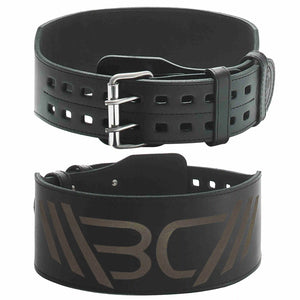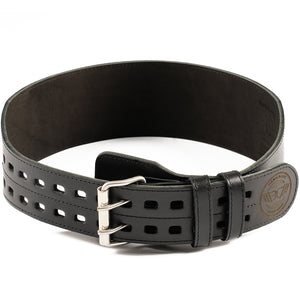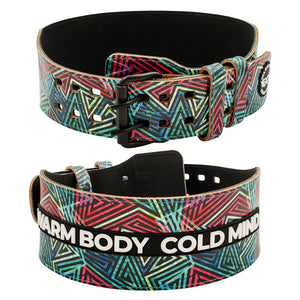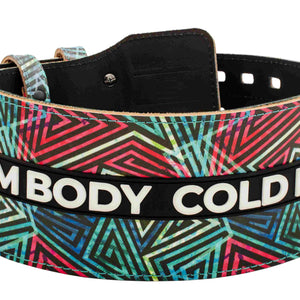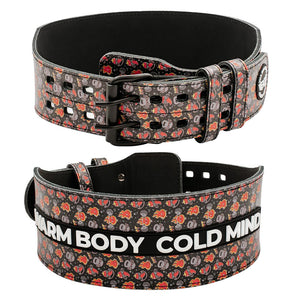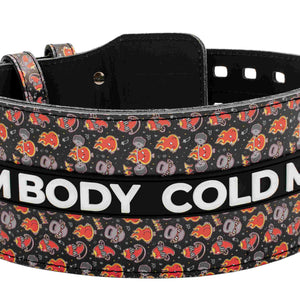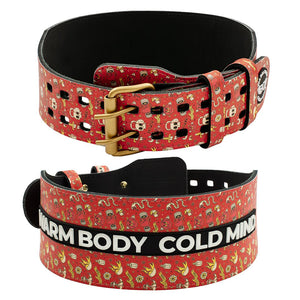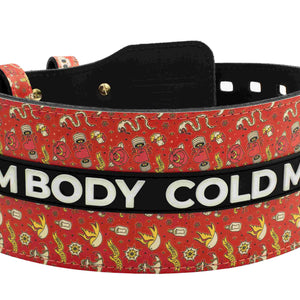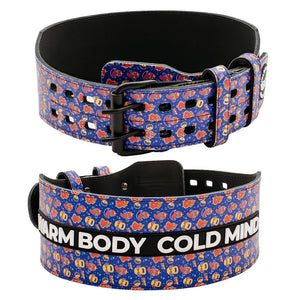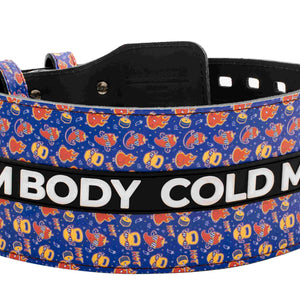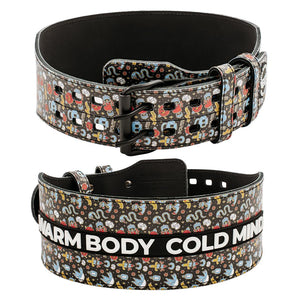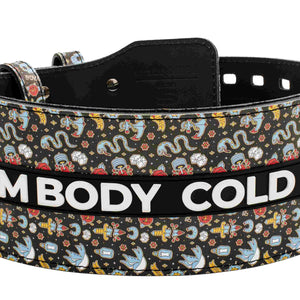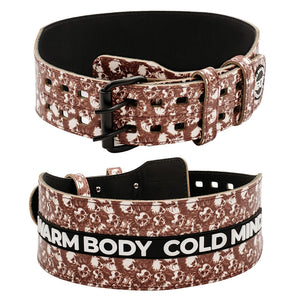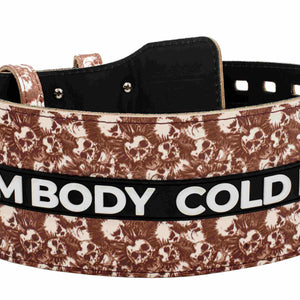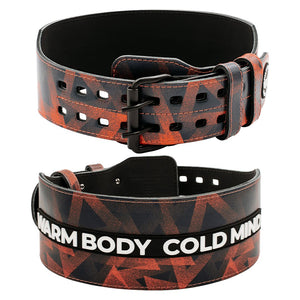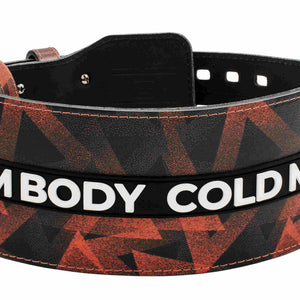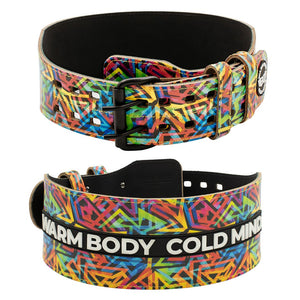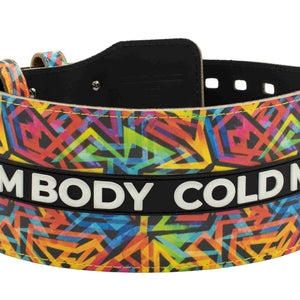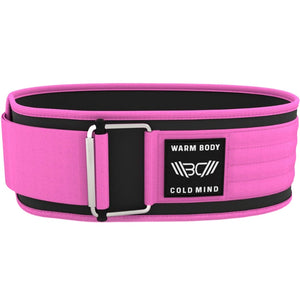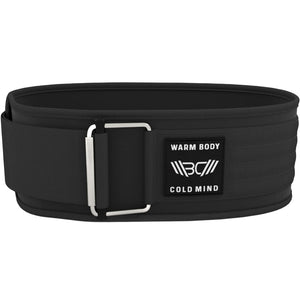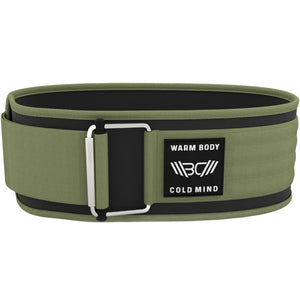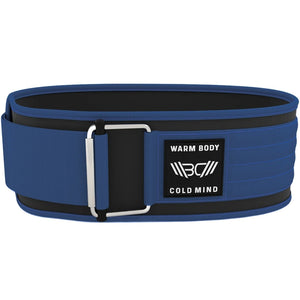Browse our leather and nylon lifting belts, ensuring safety and performance in every workout. Elevate your training with the perfect belt. Shop now!

What Is a Lifting Belt?
A weightlifting belt isn't simply a bonus — it is vital for individuals who lift loads. Its primary intention is to help the centerpiece of the body, lessen weight on the lower back, and safeguard against wounds while doing troublesome activities.
Different kinds of weightlifting belts are made of different materials and with different ways to fasten them, but all have the same purpose: to help keep the body in the correct position and avoid getting hurt. Both experienced competitors and enthusiastic fans accept that this stuff is totally vital.
People usually have two main options: leather and nylon. Both have their own advantages and disadvantages, so it depends on personal preferences. The way a weight belt is fastened, whether it's with a prong, lever, or velcro, etc. greatly affects how well it works for the person wearing it. It depends on their lifting style and preferences.
Understanding the importance of using a lifting belt involves looking at the many advantages it offers: better pressure management, improved posture and performance, and injury prevention. It also makes lifting easier and more adaptable, greatly enhancing the overall experience.
Choosing the right belt requires careful thinking and decision-making. To find the right lifting belt, a comprehensive approach considers different factors, such as assessing the material, how it fastens, its width and thickness, and how comfortable it feels.
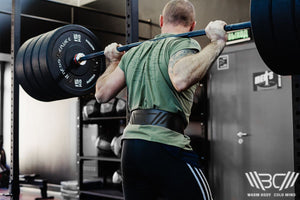
By Material
We recognize two essential materials that structure the foundation of these fundamental wellness devices: cowhide leather and nylon. Every material offers its own arrangement of attributes and benefits of real value.
Leather
Leather weightlifting belts, often seen as the stalwarts of the weightlifting domain, are celebrated for their outstanding durability and robust support. These belts feature a thicker and stiffer profile, giving a resolute stage to the lifter to support against during weighty lifts.
However, this unbending nature is a situation with two sides. While it offers considerable help for weightlifting, it reduces the belts’ adaptability, making them less obliging for different activities. Nevertheless, cowhide belts remain the favored decision for hard work activities like squats and deadlifts.
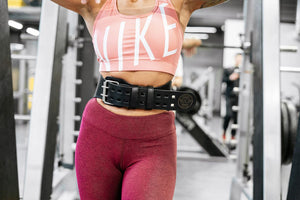
Nylon
Nylon lifting belts are the featherweights of the lifting belt world, featuring a lightweight and flexible design. These belts are frequently praised for their solace as well as their simplicity of movability — factors that make them an engaging choice for novices and people who play out a different scope of practices in a solitary exercise. While they probably won't offer a similar degree of inflexibility as calfskin belts, they are in no way, shape, or form second-rate. Their adaptability considers more prominent opportunities of development, particularly in practices that require a more profound scope of movement. In this way, nylon belts adjust to the requirements of the lifter, offering viable help across various activities.
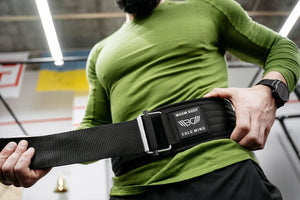
By Fastening Mechanism
The material of a weight training belt is very important for how well it works and how comfortable it is. The way the belt is fastened is also crucial for making sure it stays in place and fits correctly. There are three methods to fasten a lifting belt: the prong, the lever, and the velcro. Each has its own way of operating, giving certain benefits and potential downsides.
Prong
First in the lineup is the prong mechanism. These weightlifting belts, often crafted from durable leather, are of the traditional style of lifting belts. Their plan revolves around a metal prong that is strung through a progression of openings in the belt, considering a solid and movable fit. The prong system is eminent for its solidness and flexibility, obliging an assortment of midsection sizes effortlessly. Nonetheless, changing these belts can require a touch of exertion, particularly while managing a new and firm cowhide belt.
Lever
Lever belts are characterized by a metal lever that latches onto the squat belt to secure it in place. The belt switch considers speedy and consistent securing and detaching, going with it a famous decision among lifters who often change their belts during an exercise. Nonetheless, this comfort includes some significant downfalls, as switch belts are normally more costly than prong belts and may require incidental support or new parts.
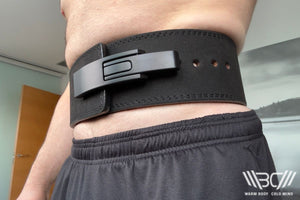
Velcro
Lastly, we have a velcro training belt, typically fashioned from flexible nylon. These belts highlight a velcro lash that can be changed in accordance with the fit of an extensive variety of midriff sizes. The simplicity of changing and securing these belts is speedy, simple, and bother-free. While velcro belts probably won't offer a similar degree of unbending help as prong or switch belts, they are frequently liked for their solace and adaptability, particularly for practices that require a more noteworthy scope of movement.
Why Do You Need a Lifting Belt?
Many people in strength training wonder if they need to use a lifting belt. It might appear to be straightforward. However, when utilized accurately, it can give many advantages that go past mere assistance. Let’s discuss the benefits of using a lifting belt for weightlifting.
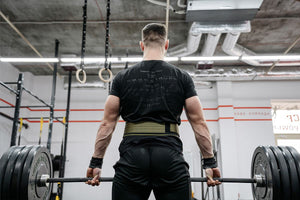
Benefit 1: Enhances Performance
The use of a weight training belt can significantly enhance your performance. It can support power, muscle development, and strength, particularly in lower-body workouts. Individuals who performed squats while wearing a belt displayed quicker speed than the people who didn't. Improved muscle movement during an exercise can prompt better muscle development over the long haul, making a gym belt a valuable accessory in your fitness arsenal.
Benefit 2: Provides Support and Stability
One of the primary functions of a gym belt is to provide support and stability during heavy lifts. It goes about as an inflexible design against which you can support your center, in this way diminishing the stress on your lower back. This capability is particularly gainful while performing practices that put a significant burden on the spine, like squats and deadlifts.
Benefit 3: Injury Prevention
Another significant benefit of weightlifting belts is their role in injury prevention. When lifting heavy weights, there's always a risk of damaging your spine. A lifting belt ensures that you maintain a straight posture and provides your spine with the necessary support to prevent injuries.
How to pick a lifting belt
Picking a workout belt matters greatly: it should match the manner in which you lift loads, meet your particular necessities, and give you the right help as you get better with your wellness objectives. Below are some hints to assist you with finding the best lifting belt.
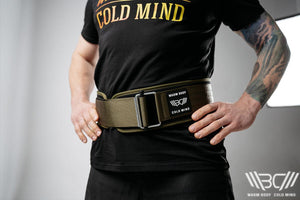
Material
The primary component to consider is the material of the belt. Cowhide leather belts, famous for their unbending nature and life span, are the go-to decision for hard work. Nylon belts, on the other hand, which are celebrated for their adaptability and solace, are great for a different scope of activities.
Width
The width of the weight belt is a pivotal factor in determining the level of support it provides. A more extensive belt offers more contact area and, thus, more help. In any case, finding some kind of harmony between help and comfort is vital. A belt that is too wide may limit your development and cause inconvenience.
Fastening Mechanism
The fastening mechanism of the squat belt is another critical factor to consider. Prong belts, with their traditional style and durability, are a reliable choice. Lever belts offer quick and easy fastening, while velcro belts are pretty adjustable and comfortable as well.
Consider Your Lifting Style
Different lifting styles demand different types of belts. For instance, powerlifters might prefer a thick and supportive belt, while Olympic weightlifters might opt for a less intrusive gym belt that allows for more mobility. If you're a cross-training athlete, you should consider lightweight options made of nylon. The belt should be thin enough not to limit your movements, yet rigid enough to offer midsection support. It should also have a simple hook-and-loop closure system that lets you put it on and take it off quickly.
Try It On
Nothing beats trying the belt on. A lifting belt should feel comfortable and secure around your waist. It should be tight enough to provide support but not so tight that it restricts your breathing or movement. Remember, each body is unique, and what works for one person might not work for another.
How to Pick the Right Belt for Your Needs
The right belt should align with your specific fitness goals, lifting style, and personal comfort. Here, we delve into three distinct fitness goals: general fitness, Olympic lifting, and powerlifting, and offer guidance on selecting the ideal cheap lifting belts for each.
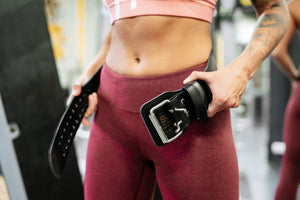
General Fitness
If you're starting to get fit, a weight training belt can be helpful, but you don't absolutely need it. For beginners, it is important to let their bodies adjust to the challenges of strength training without using a belt. However, when it comes to exercises like rows, presses, or squats, using a weight belt can be useful for added help. For the majority of various activities, a belt that can curve and change in size, typically made of nylon, would be a decent decision. Here, we focus on making things agreeable and versatile rather than truly severe or strong.
Olympic Lifting
If you're into Olympic lifting, you might want to consider a workout belt designed specifically for this type of lifting. The belt should be agreeable and not need a break-in period like most calfskin belts. It ought to likewise be planned and sliced to limit the gamble of slowing down the activity. A belt that is great for significant Olympic lifters or any individual who needs to securely integrate Olympic lifts into their exercises would be a decent decision.
Powerlifting
For powerlifting, where heavy lifts are the norm, a robust and supportive gym belt is essential. The Warm Body Cold Mind Lifting Belt is a top decision for experienced powerlifters. This belt, produced of premium cowhide, is planned explicitly for powerlifting exercises. Its thickness and inflexibility offer the most extreme help during weighty lifts, providing a strong stage against which powerlifters can support their center.

